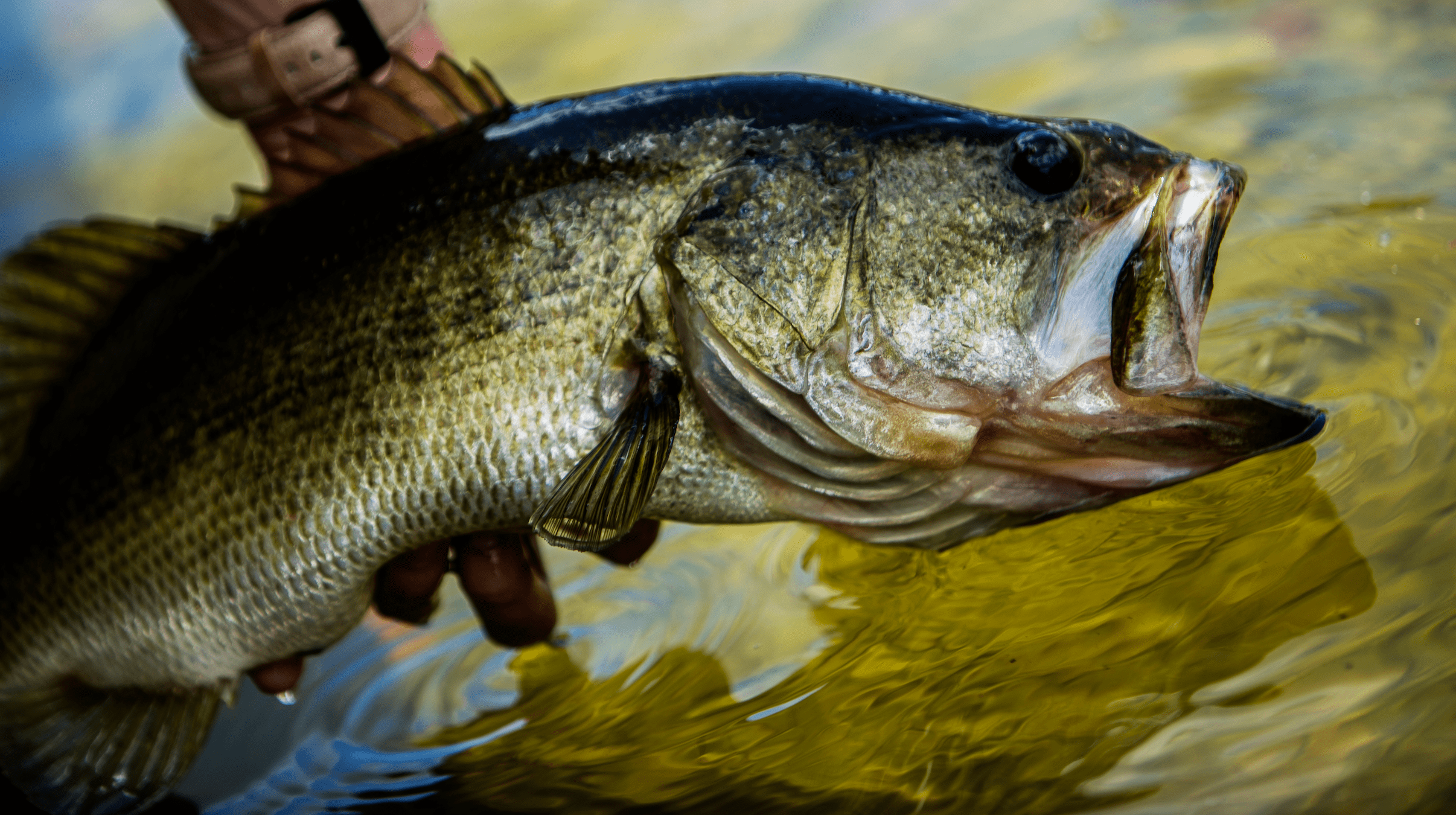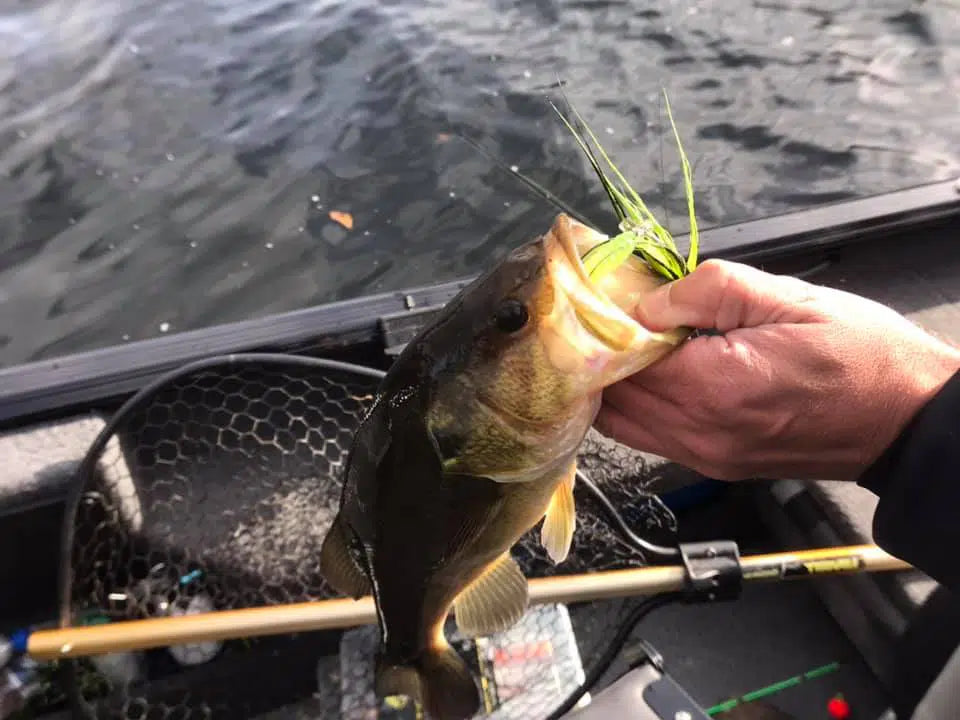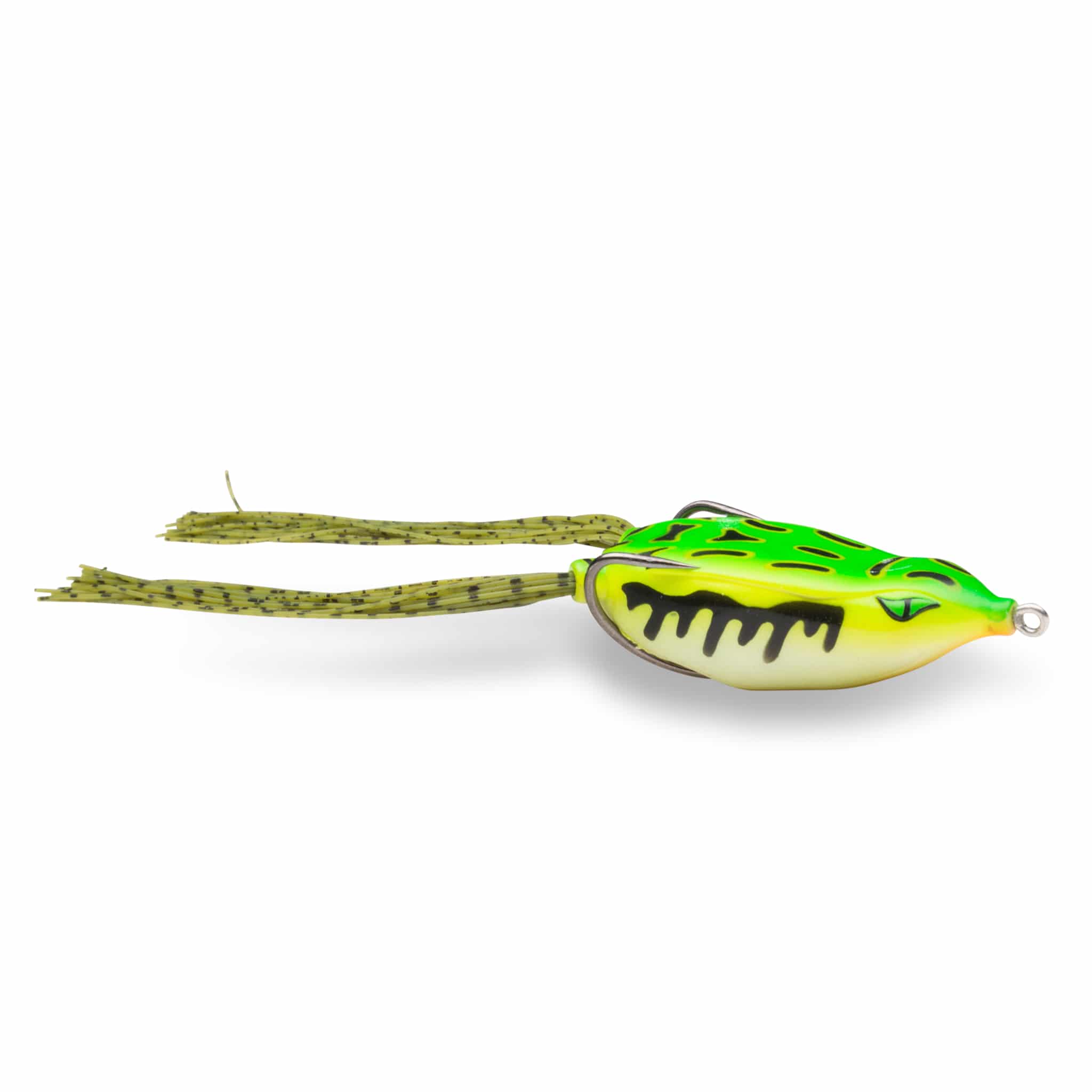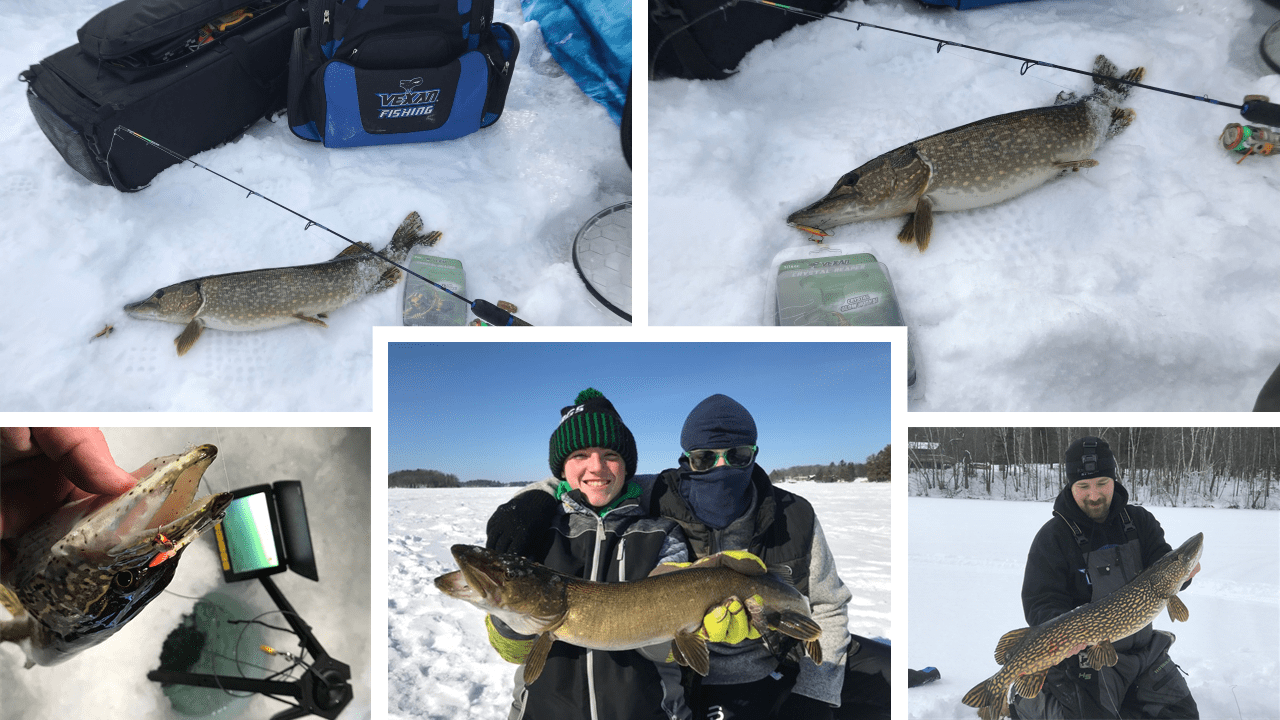Largemouth Bass Fishing

The largemouth bass is a freshwater fish. It is actually part of the Sunfish family. Its value to fisherman is honored in various ways in different states. For example, it is Alabama’s state fish. It goes by many names such as Potter’s fish, Florida largemouth, southern largemouth, northern largemouth, widemouth bass, brown bass, black bass, bucketmouth, and bigmouth bass.
It is olive green in color, with dark blotches forming horizontal stripes. The female are larger than the males. The maximum recorded length is 29.5 inches and the maximum official weight is just over 25 pounds. The average life span is 16 years.
Young largemouth bass eat small bait fish, insects, and small shrimp. Adult fish eat smaller fish such as bluegills, also snails, crayfish, frogs, salamanders, snakes and even small water birds and baby alligators. In the larger reservoirs and lakes, where the adult bass live in the deeper waters, the diet is smaller fish like sunfish, shad, yellow perch, and shiners. Other fish the adult largemouth bass eat are walleyes, trout, catfish, smaller black bass, white bass and striped bass. The prey can be as large as half the large mouth’s body length, and sometimes larger.
While the adults are generally the top of the food chain within their own environment, they can be prey when they are young. When largemouths live in weedy waters, they may have difficulty finding prey and may grow slowly. On the other hand, in lakes with no weedy cover to protect the hunted, the bass can consume the prey, end up eating all the food available, and become stunted or starve when the prey run out. When there is cover such as submerged structures, brush, weed beds, and drop offs, the bass must use its various senses such as sight, smell, vibration and hearing to find its prey.
Largemouth bass are a favorite with fisherman for the excitement of the fight. The fish often go airborne in an attempt to lose the hook. Various bait used are plastic bait such as plastic worms, also spinner baits, jigs and crankbaits. Sometimes live bait such as minnows, crawfish, frogs and night crawlers are also used. Since largemouth hang around weeds, it is a good place to fish.
There is a culture of catch and release, particularly with the larger females, who are the stock for future generations. While some anglers do keep fishing to eat the larger fish should always be released to help preserve future generations.
If you are looking for the best bass fishing rods, Vexan carries bass fishing rods, rod and reel combos, as well as bass fishing lures!
Thanks!





